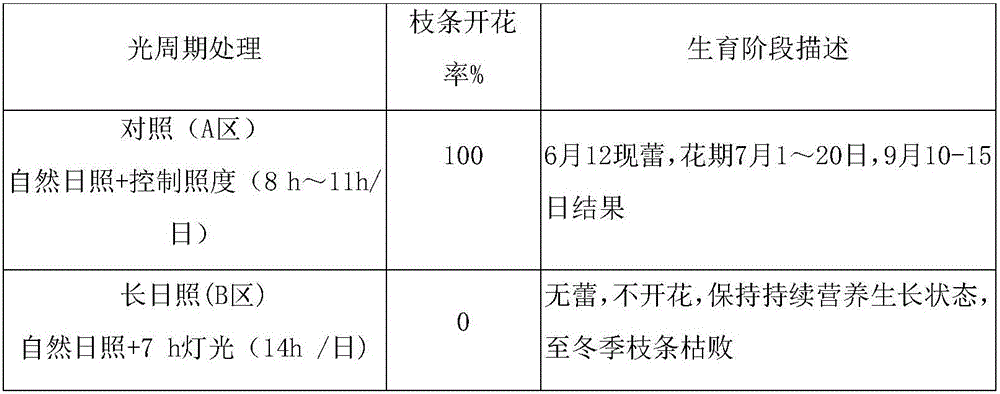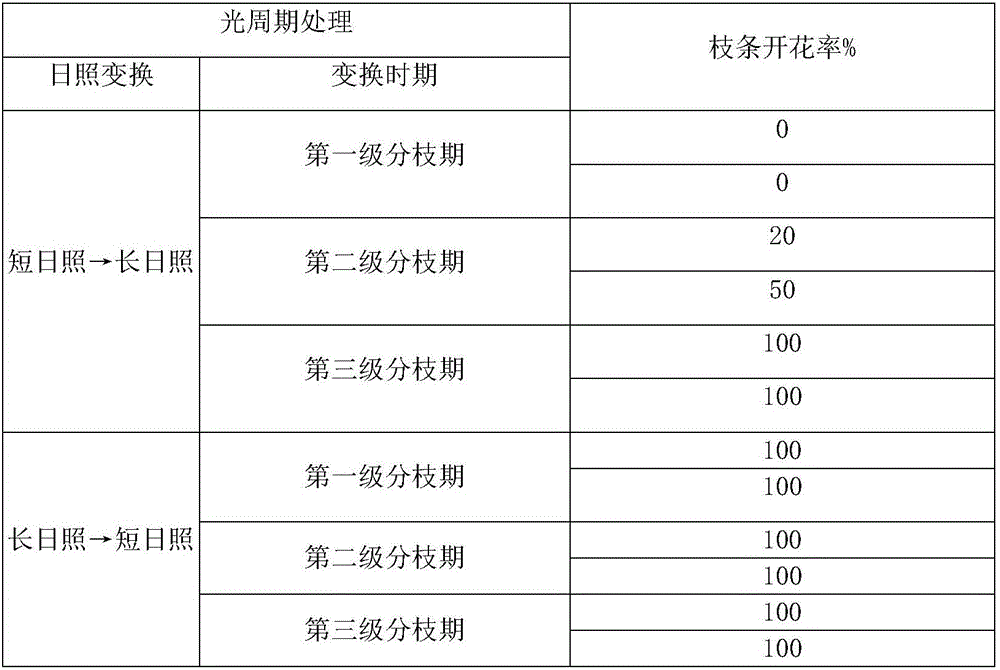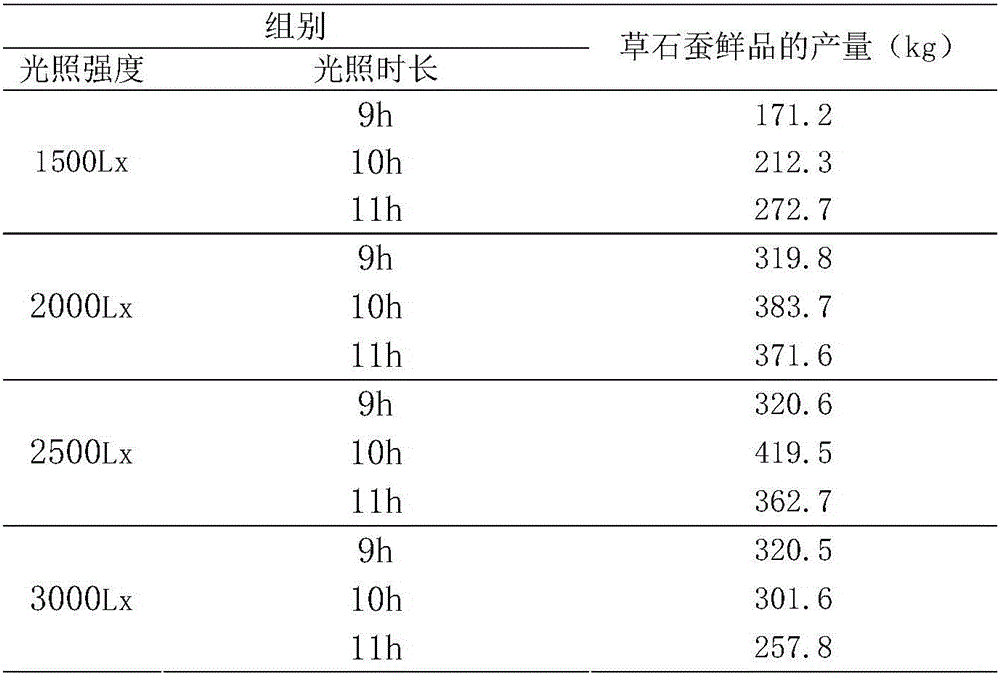Sexual propagation method based on stachys sieboldii photoperiod characteristics and application thereof
A technology of sexual reproduction and caddis silkworm, applied in the fields of application, botany equipment and methods, horticulture, etc., can solve the problems of yield and quality decline, difficulty in forming seeds of caddis silkworm, degeneration of caddis silkworm seed, etc., to achieve The effect of variety optimization
- Summary
- Abstract
- Description
- Claims
- Application Information
AI Technical Summary
Problems solved by technology
Method used
Image
Examples
Embodiment 1
[0018] Effect of embodiment 1 photoperiod on the growth process of caddis silkworm
[0019] 1 Effects of sunshine duration on the flower bud differentiation of Cadida chrysalis
[0020] Cadida tubers were collected from Liangping Datian colony in Chongqing; two separate photoperiod treatment areas, A and B, were built around the net room with light-shielding materials to block interfering light sources. Area A is the control, with natural sunlight, and the daily light duration is about 8-11 hours; in addition to natural sunlight, area B is supplemented with 2000Lx artificial light sources, and supplemented with 7 hours of sunshine between 15:00 and 24:00 every day, so that the sunshine duration exceeds 14 hours .
[0021] Simultaneously (February 1st) sow seedlings in A and B districts respectively. Before the emergence of first-order branches (on March 20), the caddis seedlings were removed from the main branches and transplanted into potted plants. Fill each pot with 10kg...
Embodiment 2
[0045] The influence of embodiment 2 different methods of chrysalis seedlings on the genetic characteristics of plants
[0046] Collect and adopt the method optimized in embodiment 1 to realize the sexual reproduction of 12 caddis silkworm plant populations (35 caddis silkworm plants in each group), be divided into four groups, and the light intensity of each group is respectively 1000Lx, 1500Lx, 2000Lx and 2500Lx, each group was randomly collected seeds from the corresponding communities under three treatments of 9h light, 10h light and 11h light, and each treatment was planted 30m 2 In the plot, the ambient temperature is controlled at 25±2°C (the temperature condition is controlled by the altitude), and the yield per mu of caddis silkworm is measured after harvest. Comprehensive scoring evaluation criteria:
[0047] Table 6 Effect of different sexual reproduction conditions of caddis worm on seed reproductive ability
[0048]
[0049] From the data in Table 6, it can b...
PUM
 Login to View More
Login to View More Abstract
Description
Claims
Application Information
 Login to View More
Login to View More - R&D
- Intellectual Property
- Life Sciences
- Materials
- Tech Scout
- Unparalleled Data Quality
- Higher Quality Content
- 60% Fewer Hallucinations
Browse by: Latest US Patents, China's latest patents, Technical Efficacy Thesaurus, Application Domain, Technology Topic, Popular Technical Reports.
© 2025 PatSnap. All rights reserved.Legal|Privacy policy|Modern Slavery Act Transparency Statement|Sitemap|About US| Contact US: help@patsnap.com



